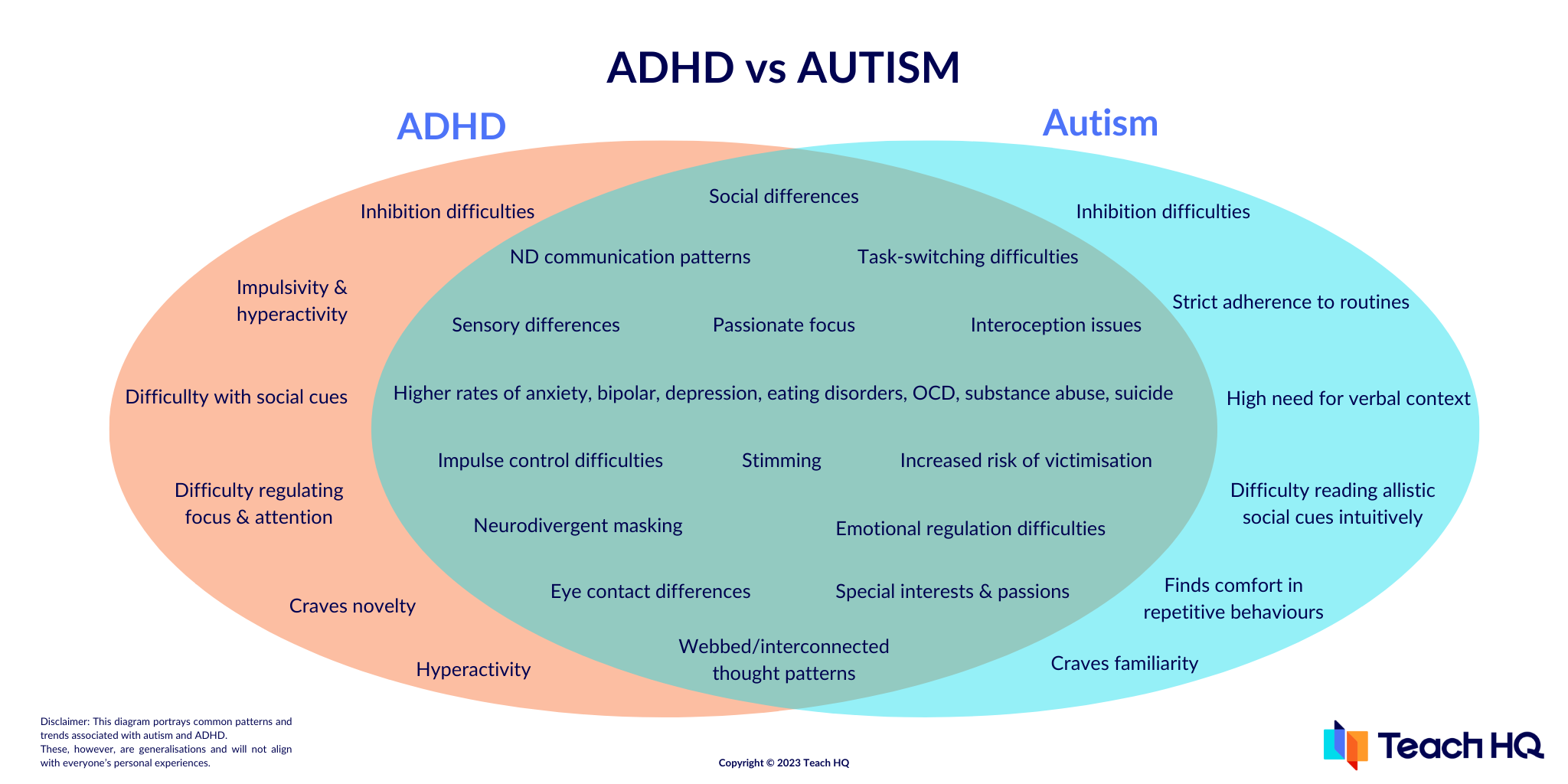- Understanding the modern student
- Prioritising mental health in the classroom
- Supporting neurodiversity: ADHD & Autism
- Enhancing executive function skills
- Cultivating cultural awareness and inclusion
Understanding the Modern Student
Our world seems to be changing before our eyes, and so too are our youth. Today’s students are more connected to the world than ever before, for better or worse. They’re aware of global crises and current events, and while it has resulted in a generation more engaged with politics and social impact than ever before, the exposure has naturally impacted their sense of safety in the world. Beyond academics, students also need emotional support. They are dealing with a lot, from awareness of pressing global issues to social issues and mental health challenges. This means they need schools and teachers to be safe and supportive places where they can talk, learn, and grow. Teachers are key in creating this kind of positive and understanding environment. So, how can we, as teachers, stay up-to-date and ready to support our students in the best way possible? This is where continuous learning and development come in. CPD helps teachers to keep learning and growing in our profession, understanding new teaching methods, and getting better at connecting with our students. Here are four of the most impactful CPD courses for teachers you can take in 2024.Prioritising Mental Health in the Classroom
Mental health is a hot topic today, especially when it comes to our youth and teenagers. Increasingly, we’re seeing that young people are struggling with their mental health, reporting high levels of stress and anxiety. Studies have shown that events like the COVID-19 pandemic have had a serious impact on the mental well-being of students. Having experienced the pandemic during their formative years, many students carry the lasting effects of that stress, isolation and uncertainty. Those from low socioeconomic backgrounds are disproportionately impacted, as unhealthy lifestyle behaviours such as extended screen time, less physical activity and sleep disturbances coupled with pandemic-related parental stress. But it’s not just global events that are causing stress. As we’re all too aware, social media plays a significant role in young people’s lives, and while it has it's not without its positives, it can lead to feelings of anxiety, pressure and online bullying. Research has found that “greater social media use, nighttime social media use and emotional investment in social media — such as feeling upset when prevented from logging on — were each linked with worse sleep quality and higher levels of anxiety and depression.” As teachers, we play an important role in supporting our students, not just in their learning but in their well-being too. The best way we can do this is by being aware of mental health struggles and learning how to support our students.
Actionable Tips for Supporting Student Mental Health in the Classroom
- Create a supportive environment
- Use positive reinforcement
- Encourage open communication
- Incorporate mindfulness practices
- Promote positive relationships
- Teach stress-management techniques
- Encourage physical activity
- Be observant and proactive
Teach HQ: Mental Health CPD Courses For Teachers
At Teach HQ, we understand the pivotal role teachers play in their students' mental wellbeing. That's why we've crafted CPD courses focused on mental health, tailored specifically for educators. These courses provide a deep dive into understanding the emotional landscape of your students and equip you with practical strategies to bring that understanding into the classroom. With the insights from our courses, you can offer an empathetic ear and a supportive space. It's about fostering a classroom atmosphere where every student feels seen and heard and where their emotional health is as valued as their academic progress. In your hands, these strategies become more than lessons; they're lifelines for students grappling with anxiety or stress. And the benefits ripple outwards. By integrating mental health awareness into your teaching practice, you send a powerful message — you're there for your students, recognising them as whole individuals with unique experiences. By showing your students that you care about them, not just as learners, but as people, you can make a world of difference. Explore mental health CPD coursesSupporting Neurodiversity: ADHD and Autism
Understanding neurodiversity is a must for any modern teacher, both in terms of being able to identify the possibility of neurodivergence in their classroom and knowing how to best support students with and without a diagnosis. It's for this reason that there's a growing need for quality neurodiversity CPD courses for teachers. While it may seem like ADHD (Attention Deficit Hyperactivity Disorder) and ASD (Autism Spectrum Disorder) are on the rise, people with these conditions have always been in society but have simply been living undiagnosed. It's only due to increased research that professionals have established a better framework for diagnosis. In fact, a growing number of adults are now being diagnosed, having slipped under the radar in their own childhoods. With more refined assessment methods and increased general knowledge, students with ADHD and autism are now able to get the tailored support that they need to thrive. ADHD and autism can sometimes overlap in how they present, with many traits overlapping, as you’ll see in the graphic below. Importantly, how they present can also differ from child to child. Girls, in particular, have long been overlooked as the presentation of these conditions is markedly different to the more widely understood traits shown by boys. For teachers, the main takeaway is to remember that students with ADHD and autism may be wired differently, but that doesn’t make them any less capable of doing amazing things with the right support. They bring their own unique way of seeing the world, which is an increasingly prized skill that simply can’t be taught. With the right approach, every student has the chance to shine, and teachers who understand this can make a huge impact.
Tips for Teaching Students with ADHD or Autism
As educators, we need to adapt to the diverse needs of each student, both neurotypical and neurodiverse. Thankfully, creating an inclusive learning environment isn’t as difficult as you might think. Many of the solutions that benefit students with ADHD and autism can be used with your entire class. The tips below aim to bridge the gap, providing educators with the tools to connect with and support all students effectively.- Structured routines
- Clear, simple instructions
- Positive reinforcement
- Sensory-friendly classroom
- Use visual aids
Teach HQ: ADHD & Autism CPD Courses For Teachers
Teach HQ recognises the need for teachers to be well-equipped to support neurodiverse students. That’s why we offer training courses specifically focused on ADHD and autism. These courses provide educators with the knowledge and tools they need to create an inclusive and supportive learning environment. Through our CPD courses, you’ll learn about common traits of ADHD and autism, how they impact learning, and what strategies you can use to support all students, regardless of whether they have a formal diagnosis. We'll also cover how to communicate with parents and work collaboratively with other professionals to ensure each student receives the support they need. Explore neurodiversity CPD coursesEnhancing Executive Function Skills
Executive function skills are the set of mental skills that help us get things done. These skills include managing time, paying attention, switching focus, planning and organising, and remembering details. For students, strong executive function skills can lead to success in the classroom and beyond. They can better manage their homework, participate in class, and work with their peers. Executive function skills are not only essential for success in school, but as adults too, in our professional and personal lives. When someone struggles with these skills in what is termed “executive dysfunction”, it can significantly impact their quality of life. As teachers, we may not have the ability to impact the underlying cause of executive dysfunction, but we can adjust our teaching methods to support students who are suffering.
Symptoms and Causes of Executive Dysfunction
Lack of executive function skills is becoming more commonplace in modern students. And while the causes can vary, the symptoms are clear. Poor time management, lack of focus, impulsivity and memory issues are all common signs. Left unsupported, this commonly results in a disruptive student with poor grades. However, executive dysfunction is not a reflection of intelligence or willingness to learn. Rather, it's a challenge to process and manage information and actions. Here’s a breakdown of some potential causes:- Neurodevelopmental differences
- Mental health conditions
- Lack of sleep
- Stress
How to Teach Students with Executive Dysfunction
Whatever the underlying cause, there are strategies you can adopt in your classroom to foster a more conducive learning environment for anyone struggling with executive dysfunction. You’ll notice that many of these tips reflect the advice for teaching students with mental health or neurodivergence.- Create structure and routine
- Break tasks into small parts
- Use visual aids
- Practice time management
- Encourage self-reflection
Teach HQ: Executive Functioning CPD Courses For Teachers
With the right training and strategies, educators can support students in developing better executive function skills. Teach HQ courses are designed to give teachers the tools they need to nurture these skills in their students. We cover a range of strategies and activities that can be easily incorporated into everyday teaching practices. Explore executive function CPD coursesCultivating Cultural Awareness and Inclusion
In today’s increasingly diverse classrooms, cultural awareness should be compulsory learning for all educators. Students come from a variety of backgrounds and bring different perspectives, experiences, and values. For educators, this means that brushing up on different cultures, religions, and customs is crucial. Implementing an inclusive and culturally responsive teaching methodology involves more than just acknowledging cultural diversity; it means adapting your teaching to suit your cohort, encouraging inclusion and creating a class culture that values the uniqueness of each individual. Embracing this approach creates a supportive learning environment and prepares students to thrive in a multicultural world.
Strategies to Create a Culturally Inclusive Classroom
- Integrate diverse perspectives
- Create an inclusive environment
- Be culturally responsive
- Encourage open dialogue

